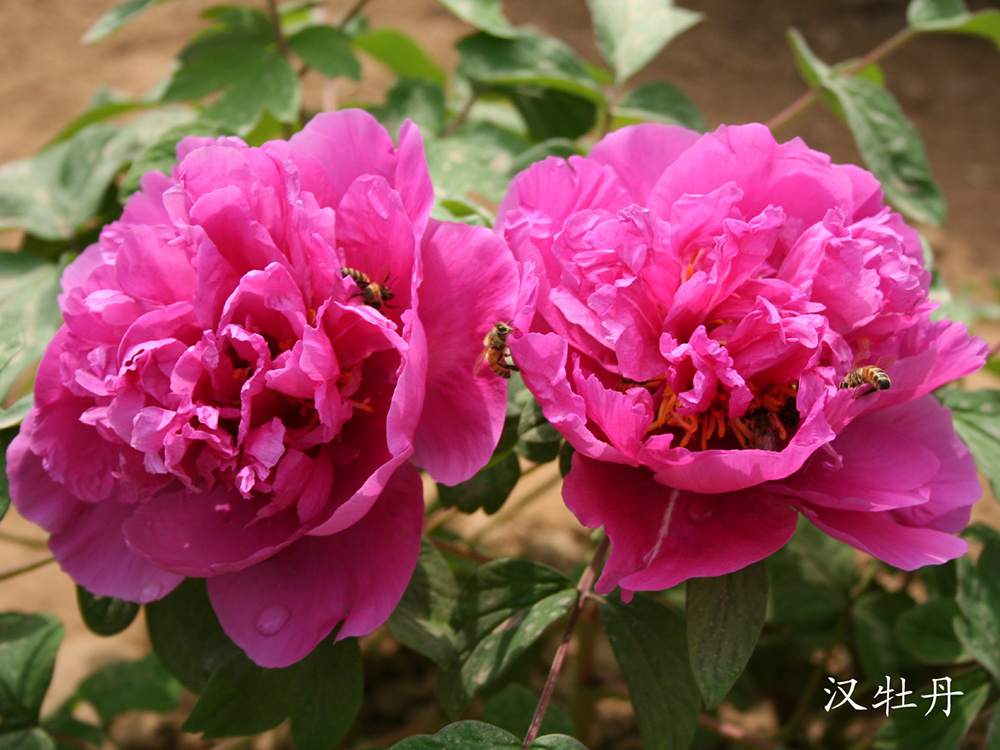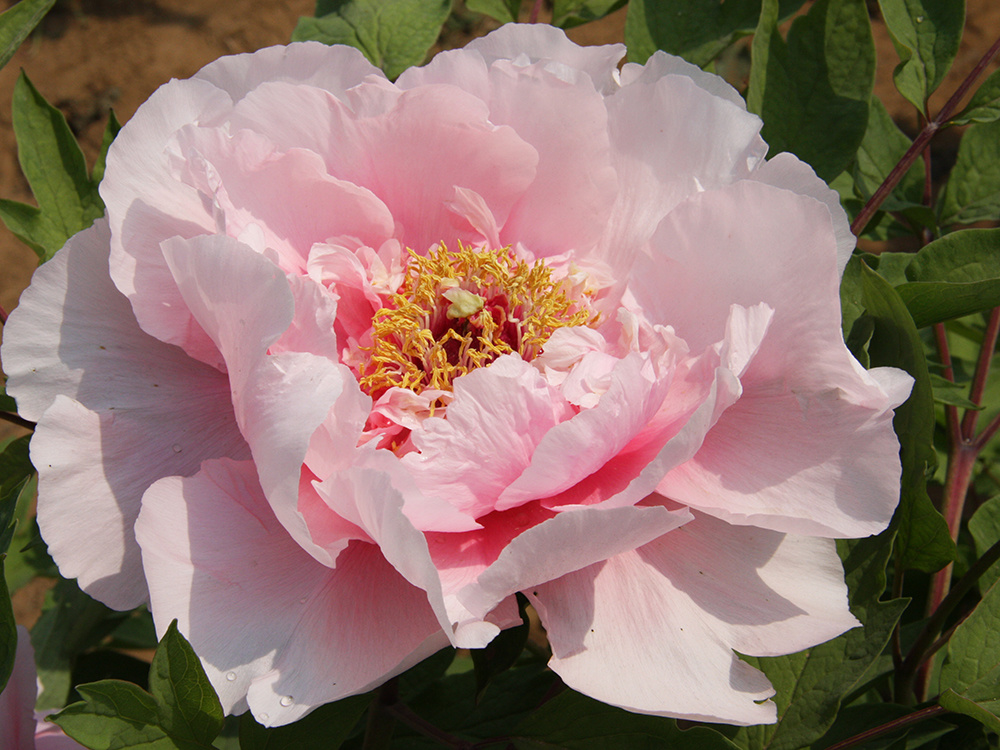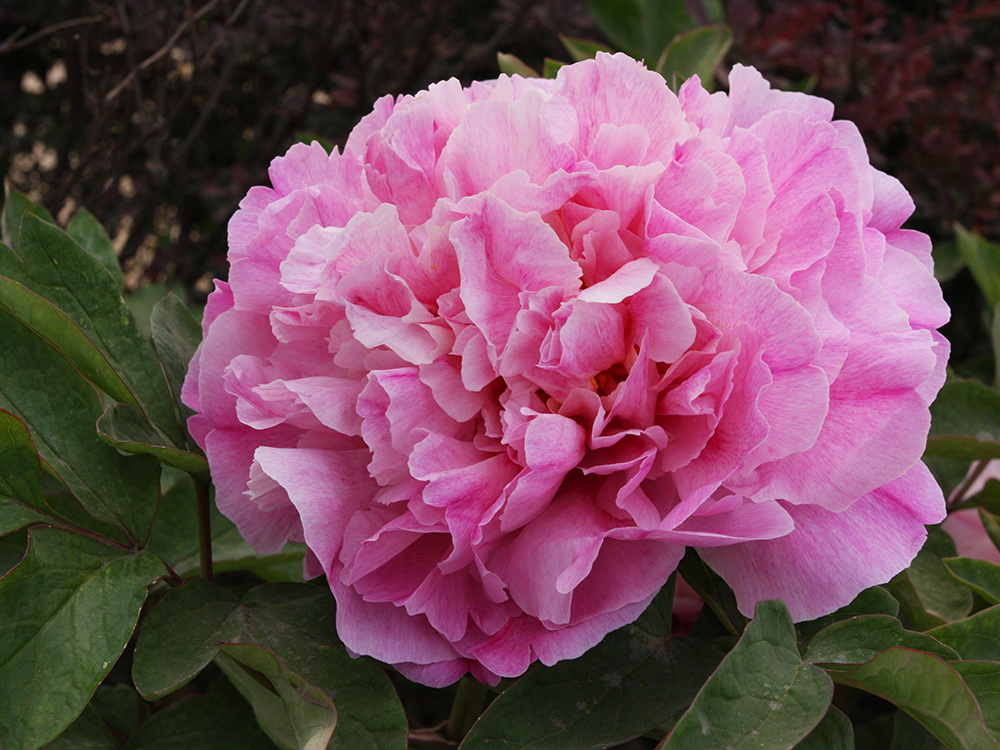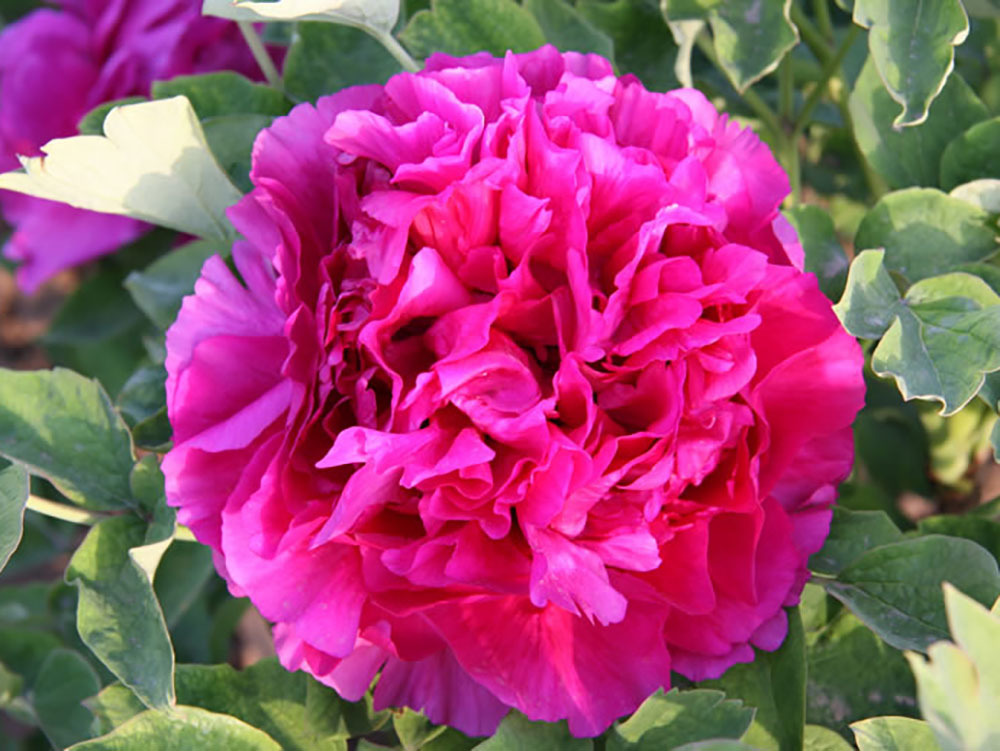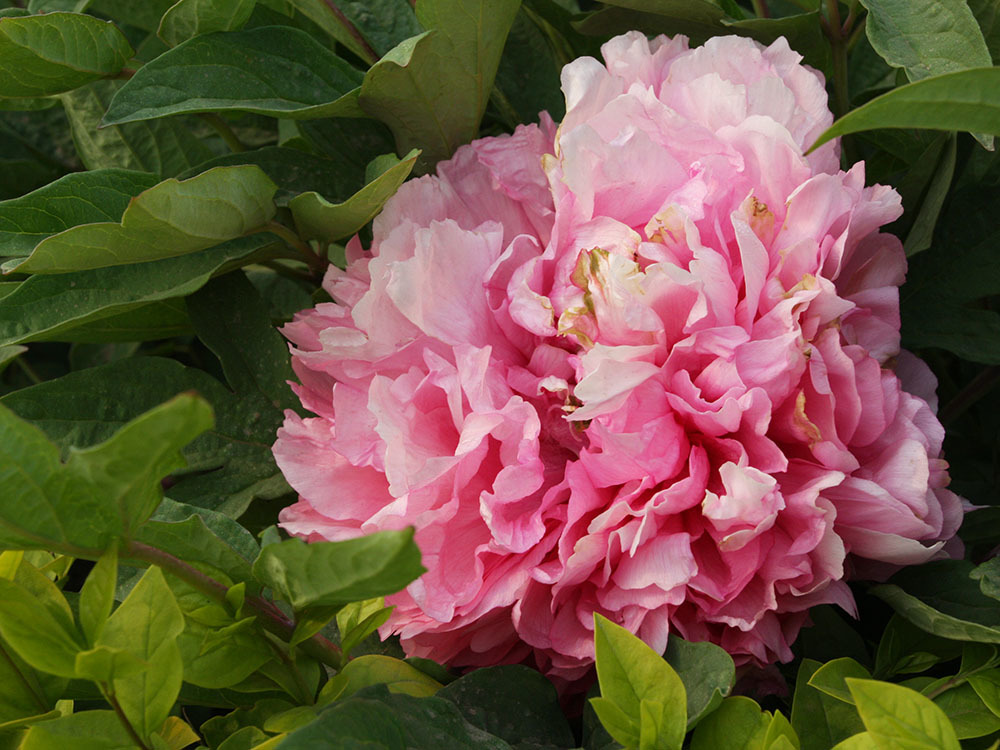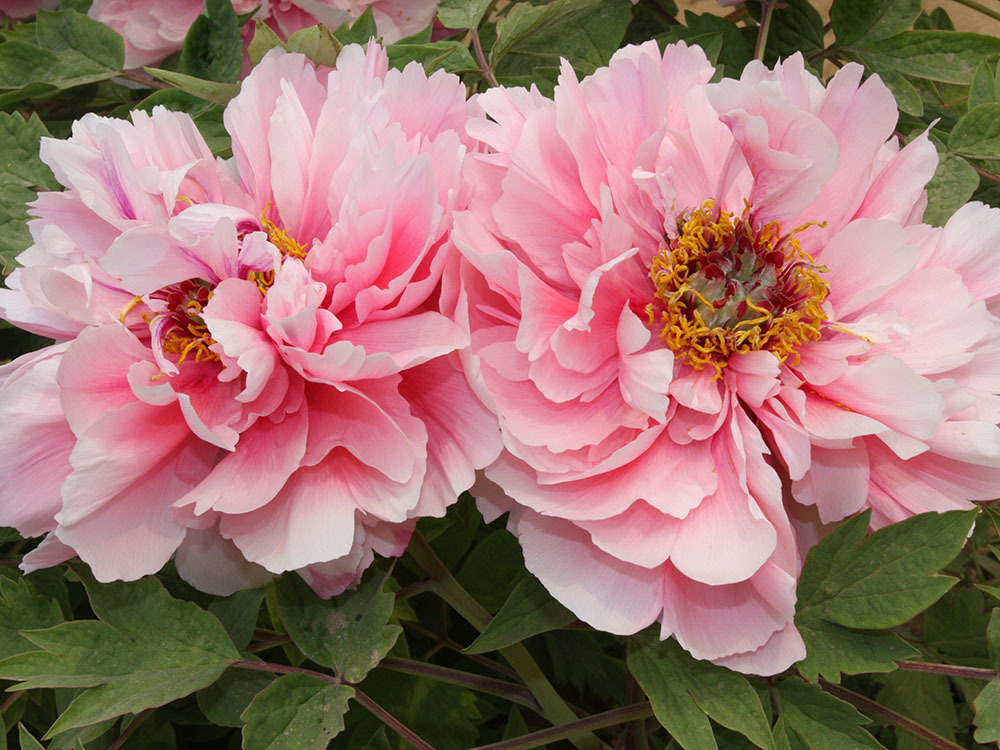Flower Appreciation
Contact Us
E-mail: bxhmd@126.com
Tel: 0086-319-7796393
Address: Han Mudan Garden, Baixiang County, Xingtai City, Hebei Province, China
Introduction to Spring Festival flower reminder of peony
In the cold winter, peony flower promotion in solar greenhouses or plastic greenhouses is based on the growth and development characteristics of different peony varieties, and artificially regulates environmental factors to meet the growth and development requirements of different stages of peony. , Appropriate hormone regulation, so as to achieve the expected flowering purpose, the main technical points are:
1. Control temperature and humidity
1. Initial management. The early temperature is 10-15°C during the day and 6-8°C at night. After 7 days, the temperature can be adjusted to 12-16°C during the day and 8-10°C at night. The relative humidity of the air can be controlled at 50-70% during the day and 80-90% at night. After 8-10 days like this, the flower buds sprout and are shiny. In 12-14 days, buds can appear. The management during this period is very important for the growth of peonies in the future.
2. Mid-term management. After the peonies bud, the temperature can be controlled at 16-18°C during the day and 10-12°C at night. It can enter the "young bud stage" in about 20 days. During this period, flower buds are very sensitive to temperature changes, and abortion often occurs due to poor stress resistance of young buds, so the temperature should be kept relatively stable. The relative humidity of the air is kept at 50-60% during the day and 70-90% at night. Do not keep the leaves and buds in contact with water for a long time to avoid infection of germs. At this time, the plants can be sprayed with carbendazim, thiophanate-methyl and other drugs. Clear fog agent for sterilization and disinfection. It is worth noting that the young buds are tender and weak at this time, and the drug concentration should not be too high.
Around 25 days, the plants enter the leaf-expansion stage. The temperature can be controlled at 18-20°C during the day and 12-14°C at night. When the temperature is high at noon, you can ventilate on the top of the greenhouse to exercise the stress resistance of the plants. The length of ventilation time should be determined according to the indoor temperature. Do not ventilate and cool down under the greenhouse to prevent cold air from directly invading the plants and stop the development of flower buds, commonly known as "cold and cold". If conditions permit, air circulation facilities can be added in the greenhouse to promote indoor air circulation and improve the transpiration of leaves, which is beneficial to the development and release of peony leaves and the reduction of diseases.
About 35 days, the flower buds enter the "flat bud stage". At this time, the flower buds are more resistant to stress and gradually adapt to changes in temperature. As long as the temperature does not change too much, the flowering rate will not be affected basically. The temperature can be reasonably controlled according to the scheduled flowering period. The temperature can generally be controlled at 18-20°C during the day and 10-16°C at night. The temperature in the greenhouse here is high, the humidity is high, and stem rot often occurs. In order to prevent this from happening, it can be controlled by spraying 600-800 times liquid of Ruifu mold or 500 times liquid of 10% thiophanate-methyl wettable powder.
3. Post-management. The peony enters the double-calyx stage in about 40 days, and enters the blooming stage in about 45 days. At this time, the temperature can be adjusted reasonably according to the flowering time. Even if it is stored in a cold room at 2-4°C, it can still bloom normally after 10-20 days .
2. Artificial supplementary lighting
Peony is a long-day plant. Due to the short sunshine hours and weak light intensity in winter, it often affects the flowering rate and growth potential. Insufficient light in the early stage can make the pedicel lengthen, become thinner, and the flowers droop; when the light is insufficient in the later stage, it can affect the coloring and reduce the quality of flower prompting, so the light should be supplemented in time to meet the light requirements of growth and development. Or incandescent lamps are used to supplement the light source for peonies, fill in the light all day on cloudy days, fill in the light at dawn and dusk on sunny days, supplement the light for 3 hours a day before budding, the daily average illuminance is 4045 lux, and add light for 5 hours a day during the budding and leaf spreading period , the daily average illuminance is 5150 lux, during the leaf opening and re-opening period, add light for 7 hours a day, and the daily average illuminance is 5330 lux, which can make the leaves large and fat, the flowers well developed, and the flowers and colors pure and bright.
3. Prepare substrate and apply fertilizer and water
1. Prepare the matrix. Peony likes fertile and loose sandy soil, so we should pay more attention to its characteristics when choosing potting soil. Generally, we use washed fine slag and peat soil to make up one part each. This kind of substrate has good air permeability and strong water seepage ability. The fertility is sufficient, the planted peonies have many new roots, the roots do not rot, and the growth is good and vigorous.
2. Apply fertilizer and water. Initial management: It should be watered thoroughly in the early stage, and then watered in time according to the humidity of the pot soil, usually once every 7-10 days. Combined with watering, topdressing fertilizer can be applied, usually diluted with fully decomposed cake fertilizer, oil residue or potassium dihydrogen phosphate. After the leaf-expanding period, you can topdress the roots of peony, still using phosphorus, potassium and micro-fertilizers as the main fertilizers, and applying less nitrogen fertilizers. Potassium dihydrogen phosphate is generally controlled within 0.3%. The principle is to apply less and apply frequently. Spray once every 3-5 days. The time should be carried out in the afternoon. In combination with spraying fertilizers, spray fungicides to prevent the occurrence of diseases.
Post-management of Spring Festival peonies
1. The budding peony should be placed in a place with sufficient light at 15-20°C to promote its flowering.
2. Peonies entering the full flowering period should be placed in a place with scattered light at 5-12°C and watered about 250 ml every 2-3 days to prolong the flowering period. You can also spray water on the leaves of peony, but it should be noted that you can only spray the leaves, not the flowers, to prevent the petals from falling off.
3. After the flowers fade, the residual buds should be removed first, and then transplanted in a large pot for planting, or moved outdoors for open field cultivation after the ground thaws.
4. Under the condition of ensuring the survival of old branches, new shoots can be cut off appropriately.
5. To ensure sufficient nutrition, fertilizers such as compound fertilizers, fermented bean dregs, and bean cakes can be used.



